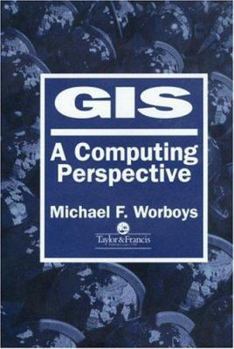GIS: A Computer Science Perspective
Select Format
Select Condition 
Book Overview
Following two successful editions, the third edition of GIS: A Computing Perspective has been completely revised and updated, with extensive new content reflecting the significant progress that has... This description may be from another edition of this product.
Format:Hardcover
Language:English
ISBN:0748400656
ISBN13:9780748400652
Release Date:November 1995
Publisher:CRC Press
Length:390 Pages
Weight:1.74 lbs.
Dimensions:0.7" x 6.9" x 9.8"
Customer Reviews
4 ratings
An unabashed advanced GIS textbook
Published by Thriftbooks.com User , 18 years ago
I'm not your average GISer. I have a BS in Mathematics and worked for 15 years as a software developer. This book was a required text for the class in Advanced Vector GIS that was part of my MS in GIS. I currently use it as a reference as I work on my PhD in pure GIScience. This book covers GIS data structures and databases in a way that a Computer Scientist would appreciate. It covers GIS algorithms in a way that an Applied Mathmetician would like. It covers GIS topology in a way that a Pure Mathmetician could learn from. It covers uncertainty in a way that a Statistician would enjoy. If you are, say a graduate student in mathematics or computer science and want to understand what all the GIS hype is about, you've found a great, concise volume that covers an intense amount of information. If you are a geographer who needs to formalize some language concerning theory and methods for a publication, then this is a good start. If you are looking for something like "how to delineate a watershed in ArcView 9", skip it and look elsewhere.
Excellent introductory book on GIS
Published by Thriftbooks.com User , 19 years ago
Having read many books of the kind I can state with confidence that this one is the best introductory book on the topic. The authors claim that the book is best-suited to people approaching GISs with a computer-science perspective and/or background and this should be taken into consideration by all prospective buyers. However, the book should still be a most valuable resource to readers from other backgrounds, as it remains the most comprehensive in its domain, and is very readable thanks to the lucid writing style of the authors. Each chapter except the first, which serves as a general introduction, deals with a particular sub-discipline within GIS. Chapter 2 describes the basics of databases. Chapter 3 clarifies important topological and metric concepts. Chapter 4 enters the area of field vs. object data models. Chapter 5 deals with raster and vector structures as well as with computational geometry and geometric algorithms. Chapter 6 moves even closer to the physical computer level and discusses indexes (access structures) and trees. Chapter 7 is about architectures (distributed, homogeneous, heterogeneous systems). Chapter 8 talks about GIS-interfaces. Until that point, the book has a very logical structure with each chapter being the logical extension of the next. Chapters 9 and 10 exist only in this second edition and provide some brief excursions into the topics of handling uncertainty and time in GIS respectively. They go into somewhat less detail than the previous chapters, yet are very well written. Remember that this book is introductory, hence dont expect to learn the intricate details of topics such as databases and computational geometry. The authors manage however, to strike a fine balance between the amount of concepts and methods being presented and the degree of detail to which each of them is analysed. Therefore the book retains its clear introductory character while maintaining a very high informational content. In addition, the authors have done a fantastic job at compiling relevant bibliographies at the end of each chapter where the readers may pursue additional details should they wish to. The graphics and figures are also self-explanatory and do a fine job at complementing the text. Verbosity and typos are scarce if at all existent. I recommend this book as the most comprehensive overview of, and a very good reference source for, GISs. It will be invaluable not only for newbies but also for mid to hi-level experts who wish to consolidate their knowledge or have a trusted reference. Undoubtedly, an indispensable resource in the library of anyone interested in geographic information systems.
Excellent Book on GIS Technical Infrastructure
Published by Thriftbooks.com User , 20 years ago
I was impressed with the authors for their clear and lucid style, assembling and relating diverse topics in a simplistic view, ranging from computer science to philosophy, to present a brilliant holistic view of GIS technical infrastructure.
A clear description of the architecture of a GIS
Published by Thriftbooks.com User , 23 years ago
This book fills a very important gap in the GIS literature. There are many good introductory book about GIS (try Burrough, for example), but they have been mostly written having a geographer or an earth scientist as their prospective reader. By contrast, Worboys writes for the computer engineer or programmer who wants to understand how a GIS really works inside. The author is a leading researcher on the field, and the book is clearly and concisely written. If you are a computer professional working in the GIS area, you'll find this book invaluable.





